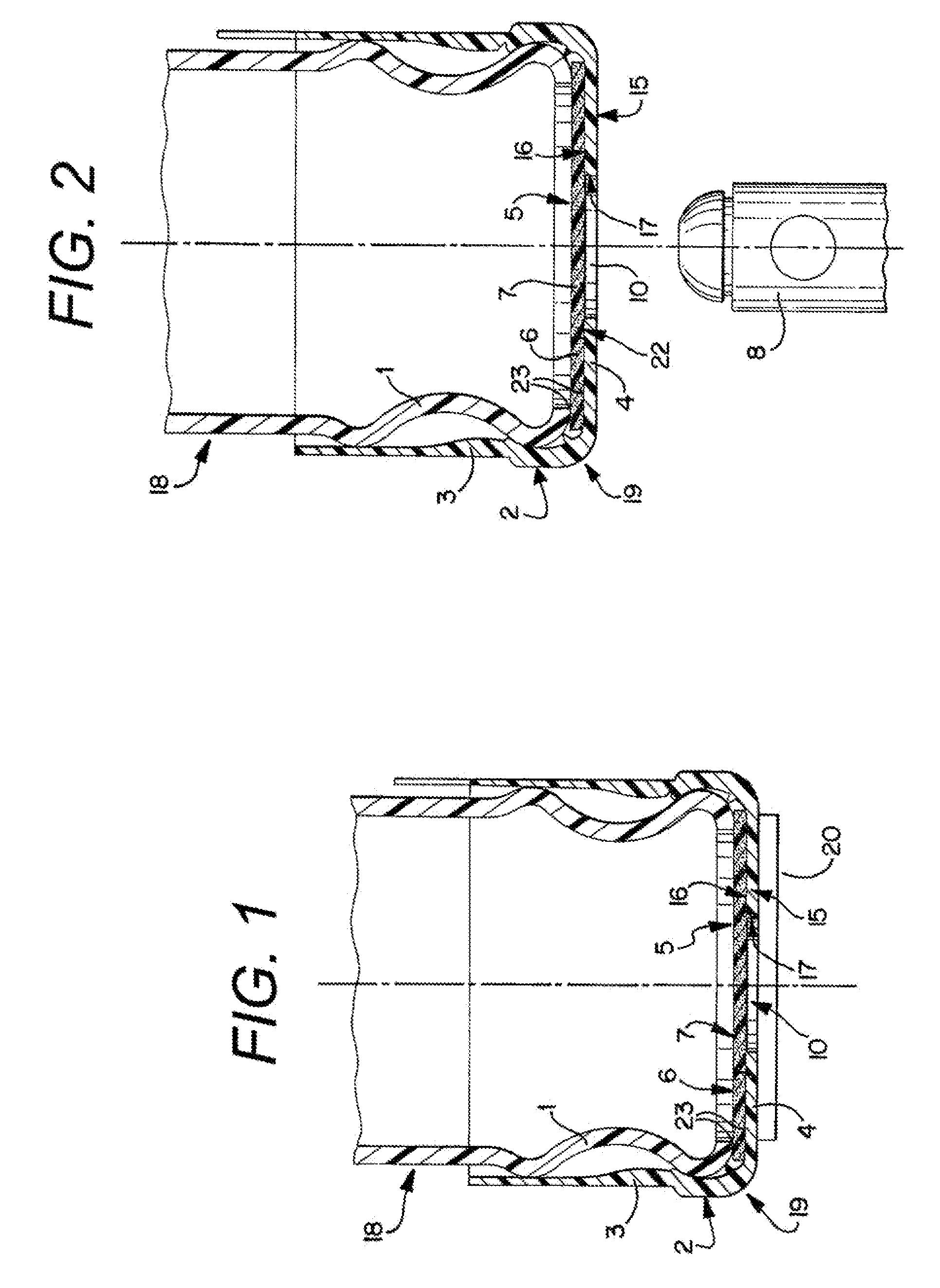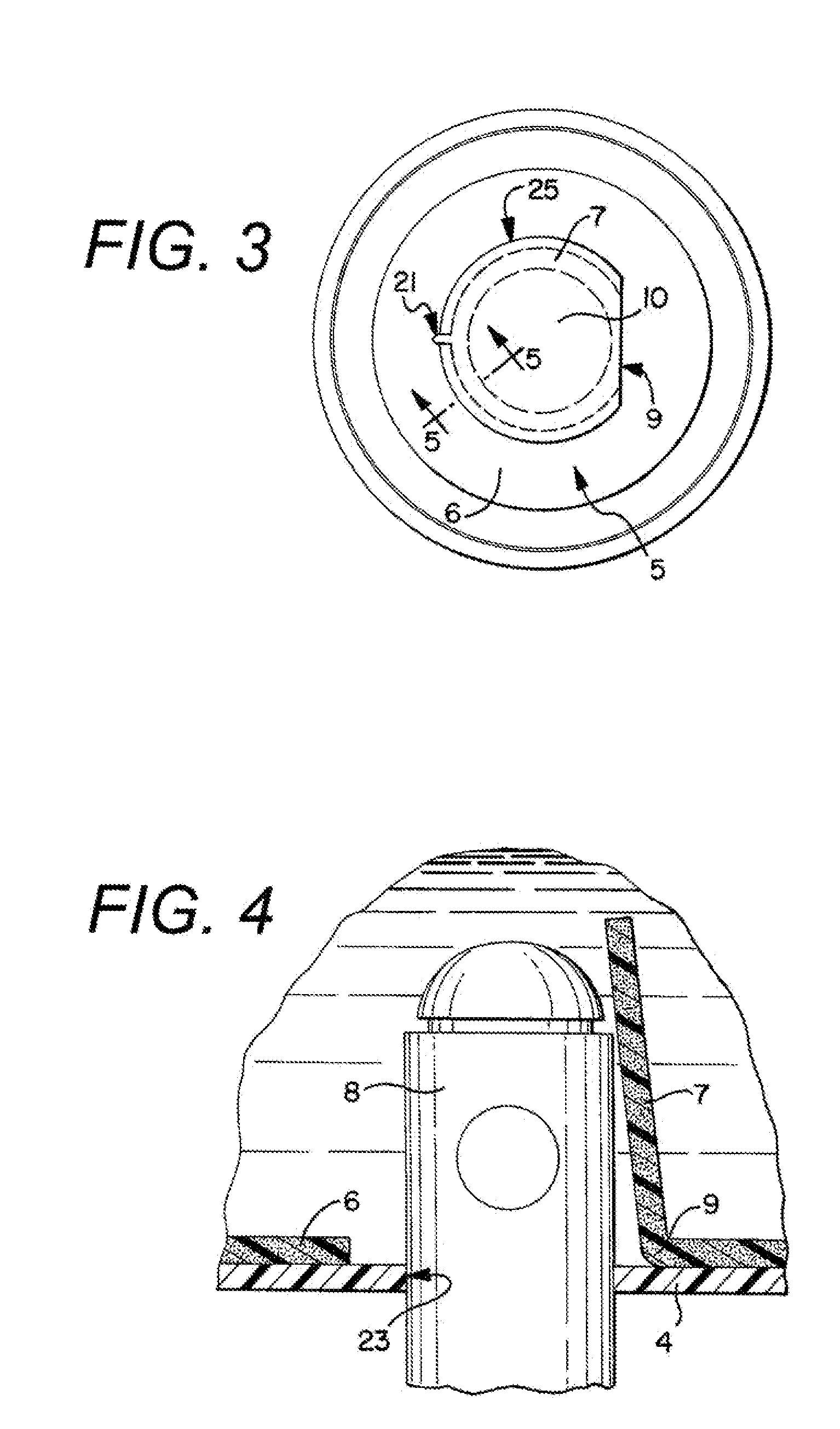Probe actuated bottle cap
a bottle cap and actuator technology, applied in the field of bottles, can solve the problems of the inner cap not engaging correctly with the probe, the failure of the probe and the inner cap or plug to re-engage, and the use of valved bottle caps, etc., to achieve less expensive manufacture of the probe, less costly use, and easy disengagement from the probe
- Summary
- Abstract
- Description
- Claims
- Application Information
AI Technical Summary
Benefits of technology
Problems solved by technology
Method used
Image
Examples
Embodiment Construction
[0006]The closures described and claimed herein not only provide the benefits of the current valved bottle caps in that they prevent bacteria transfer to the dispensing reservoir and spillage during bottle installation, but they also solve some of the problems associated with the valved bottle caps. First, these caps will have no “floaters” because there are no removable parts. Second, these caps will be closed when removed from the dispensing system, at least visually. Third, these caps will disengage from the probe more easily because they will not grip the probe as tightly as the valved bottle caps having extended central tubes, and there will be no inner cap or plug that has to snap into place on the probe. Fourth, these caps will be is less costly to use because the inner cap is eliminated. Elimination of the inner cap will not only save plastic, it will also save an entire molding operation, an assembly step, and equipment operation and maintenance. Further, it may be less exp...
PUM
 Login to View More
Login to View More Abstract
Description
Claims
Application Information
 Login to View More
Login to View More - R&D
- Intellectual Property
- Life Sciences
- Materials
- Tech Scout
- Unparalleled Data Quality
- Higher Quality Content
- 60% Fewer Hallucinations
Browse by: Latest US Patents, China's latest patents, Technical Efficacy Thesaurus, Application Domain, Technology Topic, Popular Technical Reports.
© 2025 PatSnap. All rights reserved.Legal|Privacy policy|Modern Slavery Act Transparency Statement|Sitemap|About US| Contact US: help@patsnap.com



